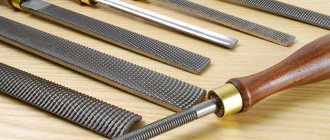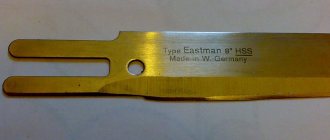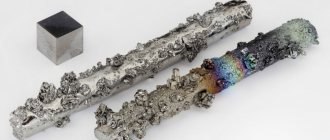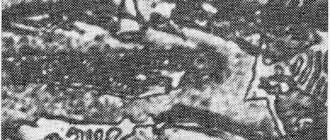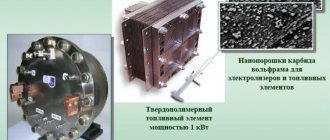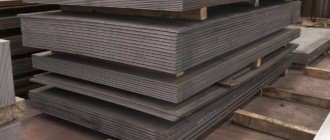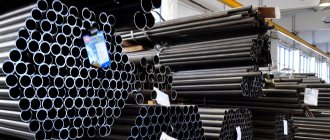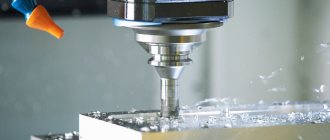Rings made of tungsten carbide, titanium, thisten and steel have won an impressive audience of fans. You probably already wear one of these yourself. Or you are in the process of making a choice, which is hindered by numerous questions. Is it true that a tungsten ring is scratch-resistant? Is it possible to reduce the size of a titanium ring? How is steel superior to gold? Which ring is stronger and which is more expensive? We give comprehensive answers and reveal the main advantages of rings made of technological materials.
The described features apply to rings without decorative coatings, colored coatings and inserts.
Hardness and scratch resistance
To find out which ring is easier to scratch, you can rank the hardness of tungsten, titanium, steel and thissten on the ten-point Mohs hardness scale. The higher the numerical coefficient, the harder the metal is, and the better it is protected from deformation and scratches.
Hardness coefficient:
- Tungsten carbide - 8.5-9
- Tisten - 7
- Titan - 6
- Steel - 4-4.5
Thisten and titanium rings are difficult to scratch under standard wearing conditions, even if they are rarely removed. And if surface scratches do appear over time, the defects can be easily eliminated by polishing in a jewelry workshop. And even after repeated polishing procedures, the titanium or thistene ring will be the same as the day it was purchased.
If you want to eliminate scratches 100%, choose tungsten carbide. The tungsten ring is so hard that it can scratch glass, ceramic tiles, silver, and gold. And will remain unharmed. Tungsten rings can even withstand friction against asphalt, concrete or a high-quality tool steel file - testing this statement empirically convinced us of its veracity.
But let's be completely honest: it is actually possible to damage the surface of tungsten carbide. If you do this intentionally with a diamond - the hardest mineral in the world, the standard of the Mohs scale. In other situations there is nothing to worry about. Tungsten carbide rings are extremely practical. Wear them day after day and you won’t experience a single scratch or dent. The fantastic ability to maintain a new look over the years has paved the way for tungsten rings into the niche of engagement jewelry and is loved by newlyweds.
Steel rings resist the appearance of microdefects several times weaker than tungsten rings and are inferior to thistene and titanium rings. But if you add the two most popular precious metals to the hardness rating, steel will be in the middle of the list - the hardness coefficient of gold and silver is 2.5-3. That is, such products are covered with scratches twice as easily as steel rings.
Which ring is harder to scratch?
| Tungsten rings | Tisten (titanium-tungsten) rings | Titanium rings | 316L steel rings |
| They don't scratch. | Very difficult to scratch. | In terms of resistance to scratches, they are inferior to both tungsten and thistene, but are significantly superior to 316L steel. | Over time, microscratches may appear on the surface, affecting the intensity of the ring's shine, but they can be easily eliminated by polishing. |
Tungsten-cobalt carbides (BK)
As already reported, BK alloys were the first sintered cemented carbide alloys to achieve great industrial importance.
BK grades are primarily intended for cutting materials with interrupted chips and for the production of wear-resistant products. In table 99 shows the change in the physical and mechanical properties of tungsten-cobalt hard alloys with different cobalt contents. For comparison, the properties of pure tungsten carbide and pure cobalt are also given. Most data represents the average. Density, hardness and flexural strength have limits that are common to most brands. BK hard alloys with the same composition are harder, the more dispersed the carbide phase; as it enlarges, the alloys become softer and more viscous. Reducing the total carbon content increases the hardness of the alloys; With an increase in the content of free carbon, hard alloys become more viscous and soft. There are thus many metallurgical means and technological possibilities for varying the grades of tungsten-cobalt carbide alloys and imparting to them the desired special properties. For example, an alloy with 5.5% Co (type VK6. - Ed.) is most often produced either in the form of a coarse-grained “ductile” grade for processing normal, soft and medium-hard cast iron, or a fine-grained, harder grade for processing hard and especially hard cast iron , as well as for grooving and fine boring of cast iron. As a rule, high hardness is combined with relatively low values of flexural strength and brittleness of the carbide and, conversely, low hardness is combined with higher values of flexural strength and toughness. Compared to hard alloys containing titanium carbide and tantalum carbide (niobium carbide), BK alloys with the same cobalt content are characterized by higher toughness and greater flexural strength, as well as better thermal and electrical conductivity. However, their resistance to corrosion and oxidation is much worse, which in turn entails a greater tendency to weld chips during turning.
Below are data on individual properties of hard alloys based on numerous literature sources.
Specific gravity.
The relative density of tungsten-cobalt hard alloys depends primarily on the cobalt content and the degree of sintering; Due to the fact that in the tungsten carbide-cobalt system at room temperature there is no significant formation of solid solutions, the specific gravity of these hard alloys can be calculated using the mixture rule. The corresponding curve is shown as a solid line in Fig. 160. The actual measured values are in most cases 0.5-3% lower than the theoretical values (see dotted line). These deviations are explained by more or less strong residual porosity, the reason for which lies in insufficiently fine grinding, insufficient sintering or, conversely, burnout or the presence of impurities (for example, oxides or graphite). The pressing pressure of a mixture of tungsten carbide and cobalt powders significantly affects the density of the pressed workpiece (Fig. 161), but does not have a large effect on the final density of the sintered product (see also below, comments on hardness). The temperature and duration of sintering have a decisive influence on the density of the product (Fig. 162). When a certain sintering temperature is exceeded, the relative density (“growth” of the product decreases), which has a very adverse effect on strength. By hot pressing it is possible to obtain an almost non-porous material, the density of which practically coincides with theoretical values.
Hardness.
There is a close relationship between cobalt content and the hardness (as measured by Rockwell A or Vickers) of tungsten-cobalt cemented carbide alloys produced under the same conditions. As the cobalt content increases, the hardness decreases, as shown in Fig. 163. As has been repeatedly noted, the hardness of hard alloys depends on microporosity, but most strongly on the grain size of the carbide phase and the dispersity of the binder metal and carbides. With the same composition, the decisive influence on the hardness is exerted by the grain size of the original powder, the degree of grinding, as well as the temperature and duration of sintering. Meyer and Eiländer carefully studied changes in the hardness of tungsten-cobalt carbide alloys depending on the grain size, pressing pressure, temperature and sintering time. As the grain size increases, the Rockwell hardness decreases significantly. The finer the powder, the lower the pressure that can be applied during pressing to obtain a dense and possibly harder product (Tables 100 and 101).
With increasing sintering temperature, hardness increases; at a certain point, depending on the grain size and composition, the hardness reaches a maximum, after which it decreases due to recrystallization of the carbide phase, as well as due to “growth” phenomena (Fig. 164). The same can be observed when the sintering process is excessively prolonged (Fig. 162).
Very dense, non-porous and hard products are obtained by hot pressing. Changes in the hardness and density of hot-pressed tungsten-cobalt hard alloys depending on the cobalt content are presented, according to Meyerson and Shabalin, in Table. 102.
The hot hardness (hardness at high temperatures) of carbide alloys is of great importance. In Fig. 165 shows the dependence of hardness on temperature, from which it can be seen that, for example, the VK6 alloy at 750° is harder than high-speed steel in the cold state. Many other authors also provide data on the hot hardness of tungsten-cobalt carbide alloys.
The difficulties of determining the cold and hot hardness of hard alloys have already been noted above. As a rule, it is very difficult to compare the corresponding values given in specialized literature and company brochures. This particularly applies to Rockwell A hardness values; It is easier to compare Vickers hardness values if the tests are carried out under the same conditions using perfect pyramids.
Flexural strength.
The bending strength of hard alloys allows us to make a well-known conclusion about the toughness of the material. The flexural strength of BK alloys increases with increasing cobalt content, but not directly proportionally (see Fig. 163). At 20-25% Co a maximum is reached, after which the flexural strength curve drops sharply. This is due to the fact that, on the one hand, at a content above 25% Co it is very difficult to achieve high density during conventional sintering and, on the other hand, at more than 15% Co the process of formation of strengthening carbide bridges is damped and WC crystals are more or less freely located in cobalt binder mass. Of course, bending strength under certain manufacturing conditions, according to the data of Amman and Hinnuber, can still increase slightly even at a content above 20% Co (see curve 3a in Fig. 163).
In alloys containing up to 10% Co, there is no residual deformation during bending up to fracture.
Such deformation becomes noticeable only at contents above 20% Co. In Fig. 134 it was shown schematically how the bending strength changes depending on the sintering temperature. When burned due to grain growth and swelling, the bending strength decreases significantly. Under-carbonated carbide also has poor flexural strength due to the Ti phase, which increases brittleness. In table 171 provides data on the bending strength of hard alloys at elevated temperatures.
Literature data on flexural strength, like data on hardness, cannot be directly compared. Only data obtained under the same conditions on the same testing machine and samples with the same cross-section can be compared. Otherwise, in addition to the usual fluctuations of 5-10%, it is inevitable that there will be additional discrepancies in the results, depending on the test conditions. As a result, the data provided by different manufacturers differs by ± 15-20%.
Compressive strength.
When hard alloys are loaded in compression, immediately after elastic deformation, fracture occurs without plastic deformation. The compressive strength of BK alloys with increasing cobalt content first increases slightly and then decreases significantly, according to Fig. 163.
In terms of heat resistance under compression, hard alloys are significantly superior to steel (Table 103). At a pressure of 1000 kg/cm2 and a temperature of 1000°, no noticeable deformation is yet observed. Brokhin also provides data on the heat resistance under compression of tungsten-cobalt hard alloys.
Impact strength.
The impact strength value can be used to evaluate the impact resistance of various tungsten-cobalt carbide alloys. Hinnuber provides the following data on the work of impact depending on the cobalt content (samples with a diameter of 12 mm without a notch, with one-sided fastening): with a content of 6% Co - 100 kg*cm; 11% - 150 kg*cm; 15% - 185 kg*cm; 20% - 220 kg*cm.
The impact strength of the VK6 alloy, depending on the degree of sintering, is characterized by the curve in Fig.
166. These values were obtained on samples with a cross-section of 6x6 mm without a notch and a distance between supports of 40 mm. The shape of the curve is similar to those that characterize the relationship between sintering temperature and shrinkage or flexural strength. At the optimal sintering temperature (for a given composition), the highest impact strength is obtained. With a further increase in temperature, the impact strength decreases due to an increase in the porosity of the samples.
Tensile strength and elongation.
Due to the brittleness of the material, it is very difficult to determine these strength characteristics. In tungsten-cobalt hard alloys containing up to 10% Co, it was not possible to establish residual deformation up to fracture. Minor elastic deformation is followed by rupture without plastic deformation. The tensile strength of the VK6 hard alloy, which has a bending strength of 144 to 165 kg/mm2, is, according to Ballhausen, from 36 to 62 kg/mm2. Hard alloys, in which the proportion of cobalt by volume is large, can have a tensile strength of the order of 85 kg/mm2.
The ratio of tensile strength to compressive strength for BK hard alloys is about 0.3 (for high-speed steel 0.7, for glass 0.1-0.2), the ratio of tensile strength to bending strength is about 0.5.
Hard alloys with 25% Co or more, as well as hard alloys based on titanium carbide with nickel and chromium, containing 60-80% metal binder, have measurable elongation values.
Heat resistance, long lasting strength.
Recently, great interest has been generated in the heat resistance and long-term testing strength of hard alloys, especially after attempts have been made to use them as heat-resistant materials, dies, hot pressing dies, turbine blades, etc.
Of course, tungsten-cobalt carbide alloys are of interest only at medium temperatures, since at higher operating temperatures they are highly oxidized.
Hinnuber reports that the long-term strength of the VK6 hard alloy at 900° is about 7 kg/mm2. Below are data on the change in flexural strength of tungsten-cobalt carbide with 13% Co as a function of temperature: Flexural strength
. Fatigue strength under alternating bending, which may be important in the case of the use of hard alloys for structural purposes, is ± 46 kg/mm2 for the VK6 alloy at 2*10–6 cycles.
Elastic modulus.
The modulus of elasticity of tungsten-cobalt hard alloys is of interest under elastic loading of this material (for example, Brinell balls, carbide rolls, carbide springs, etc.). Data from Kester and Rauscher et al. are given in table. 99. The elastic modulus, as a rule, decreases with increasing cobalt content (see Fig. 167). In Fig. 168 shows the temperature dependence of the elastic modulus of the VK6 hard alloy.
Lardner and McGregor carefully determined the elastic modulus of hard alloys based on tungsten carbide with cobalt and titanium carbide with cobalt at normal and elevated temperatures.
These authors also provide data on the Poisson's ratio for the same hard alloys. Their results are basically consistent with those of Koester and Rauscher. The elastic modulus of hard alloys is approximately three times greater than that of steel. The greatest modulus value is found in fine-grained tungsten-cobalt carbide alloys for machining hard cast iron. Carbide Brinell hardness test balls flatten significantly less than steel balls and produce more accurate test results. For precision rolling of hard materials, solid carbide rolls are superior to steel rolls, which have more deflection. Shear modulus.
The torsional modulus of tungsten-cobalt carbide with 13% Co is 12,100 kg/mm2 (for high-speed steel 5660 kg/mm2).
Thermal conductivity.
Tungsten-cobalt carbide alloys have better thermal conductivity compared to high-speed steel, which, in particular, determines their higher resistance when cutting materials that form intermittent chips. The thermal conductivity BK of hard alloys is two to three times higher than that of high-speed steel, and is approximately 0.06 cal/cm*sec*deg.
The Wiedemann-Franz coefficient for an alloy with 13% Co is 12.2*10V-6 watt/ohm*deg.
Coefficient of thermal expansion.
Thermal expansion is important when carbide inserts or products are soldered to other materials. The thermal expansion BK of hard alloys increases with increasing cobalt content, as can be seen from Table. 99.
The thermal expansion BK of hard alloys does not, however, exceed half the value characteristic of high-speed steel. While below 10% Co the expansion is determined by the rigid tungsten carbide framework, above 10% Co, when the tungsten carbide framework therefore begins to dissolve, the thermal expansion changes according to the mixture rule.
Specific heat.
The specific heat capacity of tungsten-cobalt carbide with 6-11% Co is about 0.05 cal/g.
Electrical conductivity.
The electrical conductivity BK of hard alloys varies depending on the cobalt content according to the data in Table. 99.
Magnetic properties.
Literature data on the magnetic properties of hard alloys are scarce. There is a relationship between magnetic saturation and cobalt content (or double carbide and n phase content) on the one hand, and between coercivity and degree of sintering, as well as grain size, on the other hand, which can be used for quality control.
For BK hard alloys, the values of magnetic saturation and coercivity given in Table 1 were measured. 104. It is quite clearly seen that magnetic saturation increases with increasing cobalt content. Given the same composition, the coarse-grain carbide grade WC has a significantly lower coercivity than the fine-grain grade intended for machining hard cast iron.
Structure
. The formation of the BK structure of hard alloys and its influence on the properties was covered in detail in the previous chapter. It is worth pointing out once again the numerous works on studying the structure of tungsten-cobalt hard alloys.
Resistant to corrosion and scale formation
. Corrosion resistance is important when carbide is used in the chemical industry or for wire drawing. Comparative data on the resistance of hard alloys to the effects of sea water, acids and alkalis are given in a number of works. In table 105 and 106 give the weight loss of hard alloys during prolonged exposure to various mineral acids and caustic soda at room temperature and at boiling point. Hard alloys with a binder metal are resistant to sulfuric and hydrofluoric acids at ordinary temperatures. They are unstable against hydrochloric and nitric acids; In particular, significant dissolution of cobalt occurs at the boiling point. Resistance against caustic soda is quite high even at boiling temperature. Hard alloys without a metal binder have significantly better anti-corrosion resistance (compared to BK hard alloys).
Weight loss when exposed to dilute sulfuric acid on typically sintered and hot-pressed tungsten-cobalt carbide alloys with 3-11% Co is given in Table. 107. As can be seen, these carbide alloys resist the action of sulfuric acid well, which is important when used for drawing wire with acid treatment.
When using a carbide alloy as a heat-resistant material in air (turbine blades, nozzles, hot pressing dies, etc.), the formation of scale is as important as when using carbide alloys for cutting (carbide cutters can be heated to temperatures of the order of 700-1100 °). As a rule, BK hard alloys have poor scale resistance, since at elevated temperatures in air a loose and fragile layer of oxides is formed. In contrast, hard alloys containing titanium carbide, and, in particular, hard alloys in which cobalt is replaced by a scale-resistant binder, have good scale resistance.
Cutting resistance.
We only note the interesting relationship between grain size and durability, given in table. 108.
Wear resistance.
Few comparable data can be found on the wear resistance of BK carbide due to testing difficulties. Koelbl determined the wear resistance of typically sintered and hot-pressed tungsten-cobalt carbide alloys with 5% Co using the Ammann sand blasting method. According to his measurements, the weight loss is 0.9 and 0.35 g and the wear volume is 68 and 22 mm3, respectively. The dependence of wear during sandblasting on the cobalt content is shown by curve 4 in Fig. 163. Wear of hard alloys, according to Savin, strongly depends on porosity. As the data below shows, the BK structure of carbide alloys also has a great influence on wear during sandblasting: Compared with conventional steels, the wear resistance of carbide alloys is very high.
Areas of use.
The areas of application of BK carbide alloys are presented in table. 109.
Is it possible to change the size
The size of a tungsten, titanium or thistene ring cannot be reduced or increased. The equipment of traditional jewelry workshops is not designed to process such hard metals.
We attribute a similar property to 316L steel. If you don’t believe me, try to find a craftsman who will resize the steel ring. And if you find a specialist with the appropriate equipment, the cost of the service is unlikely to please you. The price tag will be comparable to resizing a gold ring and will likely exceed the original cost of your ring.
| Tungsten rings | Titanium rings | Tisten rings | 316L steel rings |
| Can't resize | |||
A profitable alternative when buying rings online is to choose a store that provides a free exchange service. The opportunity to exchange a ring of the wrong size by mail or when visiting a showroom in our store is available within 30 days after receiving the order. To reduce the likelihood of making an erroneous choice, we recommend that you familiarize yourself with methods for determining ring size at home before purchasing online.
Russian industry
One of the leading enterprises engaged in the field of production and scientific development is the Kirovograd Hard Alloy Plant. KZTS has extensive in-house experience in introducing innovative technologies into production. This allows it to occupy a leading position in the Russian industrial market. The company specializes in the production of sintered carbide tools and products, metal powders. Production began in January 1942. At the end of the 90s, the enterprise was modernized. Over the past few years, the Kirovograd Hard Alloy Plant has been focusing its activities on the production of improved multifaceted replaceable inserts with wear-resistant multilayer coatings. The company is also developing new tungsten-free compounds.
Differences in weight
Among our four, the ones with the lightest weight are titanium rings. An option for those who prefer the lightest possible jewelry or are not used to wearing a ring and have decided to buy one for the first time. Steel rings are 1-1.5 times heavier than titanium rings, but lighter than Tisten models.
Tungsten rings are comparable in weight to products made from gold and platinum, which are included in the ten heaviest metals in the world. On average 4 times heavier than titanium models.
| Tungsten Carbide Rings | Titanium rings | Tisten (titanium-tungsten) rings | 316L steel rings |
| They are distinguished by significant weight and feel on the hand like gold or platinum rings. | The lightest, you can hardly feel it on your hand. | Lighter than tungsten, heavier than titanium and steel rings. | Lighter than tungsten and Tisten rings, heavier than titanium rings. |
Cast connections
Carbide tools produced by this method are highly resistant to abrasion by the workpiece material and chips. They do not lose their characteristics at heating temperatures from 750 to 1100 degrees. It has been established that products made by melting or casting with the addition of a kilogram of tungsten can process five times more material than objects made of high-speed steel with the same W content. One of the disadvantages of such compounds is their fragility. As the proportion of cobalt in the composition decreases, it increases. The speed of carbide cutters is 3-4 times higher than that of steel.
Profitable price
Affordable price is an important advantage of all four alloys. When we say “affordable,” we mean a comparison with the high price level of precious metals. The owners of the most budget price tag are steel rings. Models made of tungsten carbide will cost more, which is justified by the difficulties in processing it, which increases the level of production costs. It is worth noting that fans of tungsten rings living in the CIS countries are noticeably lucky. In US stores, prices for similar models are much higher.
| Tungsten ring | Titanium ring | Thisten ring | 316L steel ring |
| Most expensive option | Cheaper than tungsten, but more expensive than steel rings | Cheaper than tungsten, but more expensive than steel rings | The most affordable option |
Among our four, titanium and thistene rings are in the middle price category. Cheaper than tungsten, but not significantly.
Color change over time
If the ring begins to darken or show signs of rust, it is a piece of mediocre quality jewelry. Rings made of tungsten, titanium, thisten and stainless steel (without color coating) do not change the original shade, are not afraid of exposure to ultraviolet radiation, water (even sea water), are resistant to corrosion, and do not oxidize when interacting with the skin (unlike some silver jewelry) .
| Tungsten ring | Titanium ring | Thisten ring | 316L steel ring |
| Do not change color, do not darken, do not fade, do not rust. | |||
A change in the color of the tungsten ring, as well as models made of thisten or titanium, is a sign of an increased content of impurities in the metal alloy. As well as the darkening of the steel ring - the fact that its composition does not correspond to the proven grade of 316L steel.
Which ring can be engraved on?
You can engrave an inscription on a ring made of any metal - steel, titanium, thisten and even tungsten carbide. In most cases, inscriptions on the hardest materials that are difficult to machine are taken on by salons that offer laser engraving services on stainless steel.
| Tungsten rings | Titanium rings | Tisten rings | 316L steel rings |
| All rings can be laser engraved. | |||
Developments
Today, various studies are being carried out in the domestic industry, including an in-depth analysis of the possibility of increasing the characteristics of hard alloys. They mainly concern the granulometric and chemical composition of materials.
As a fairly successful example over the past few years, we can cite the compounds of the TSN group. Such alloys are specially designed for friction units operating in an aggressive acidic environment. This group continues to develop new compounds in the VN group proposed by the All-Russian Scientific Research Institute of Traumatology and Technology.
During the research, it was found that by reducing the grain size of the carbide phase, characteristics such as strength and hardness of the alloys significantly increase. The use of technologies for regulation and plasma restoration of particle size distribution today makes it possible to produce materials whose fraction size is less than a micron. TSN grade alloys are today widely used in the production of oil and gas and chemical pump components.
Hypoallergenic properties
Almost any metal jewelry can cause an allergy. It all depends on the composition of the alloy and individual physiology. The base alloys (tungsten, titanium, gold, etc.) are mostly hypoallergenic. The culprits of negative reactions are impurities and additives. They are present in a large number of jewelry alloys made of platinum, silver, gold, as well as in tungsten carbide, thissten, 316L steel and even titanium (with the exception of ASTM-F136 titanium, from which jewelry for primary piercings and medical implants are created).
If you have already encountered an allergy to nickel, chromium, cobalt or other additive metals, you cannot exclude the possibility of its reoccurrence. You will have to approach the choice of jewelry as carefully as possible and, perhaps, some types of modern jewelry will be prohibited for you. In other cases, rings made from alternative metals have proven themselves to be excellent. Customer complaints about negative reactions related to 316L steel, tungsten, titanium and thissten models are rare in our store.
About other features
The increased hardness of tungsten carbide and thissten gives the rings enviable advantages, but makes them fragile. Not in the sense that they, like crystal, break into hundreds of small fragments. But if there is a strong impact with a heavy object or a fall from a height (on asphalt, ceramic tiles, concrete), the ring may crack or burst, breaking into two parts. In a long chain of advantages, this is perhaps their only weak link.
Steel and titanium rings do not have this feature. If dropped, they will remain intact; the worst outcome is a few scratches.
Application
In modern industry, hard alloys are widely used. At the same time, materials are constantly being improved. The development of this manufacturing sector is carried out in two directions. First of all, the compositions of alloys are improved and their manufacturing technology is improved. In addition, innovative methods of applying compounds to products are being introduced. Carbide tools contribute to a significant increase in labor productivity. This is ensured by the high wear resistance and heat resistance of the products. Such characteristics allow working at speeds 3-5 times higher than for steel. Modern burrs, for example, have such advantages. Carbide materials manufactured using advanced technologies (electrochemical and electrophysical methods), including the use of diamond blanks, are among the most in demand in industry today.
About tungsten, titanium, thisten and coated steel rings
Colored coatings are not as durable as tungsten carbide, titanium, thysten or steel. Therefore, it is recommended to handle blue, black, gold and other colored rings more carefully, protecting them from the effects of household chemicals and other aggressive substances and proximity to hard objects. How to increase the service life of multi-colored models - read the article about the features of rings with IP and PVD coating.
